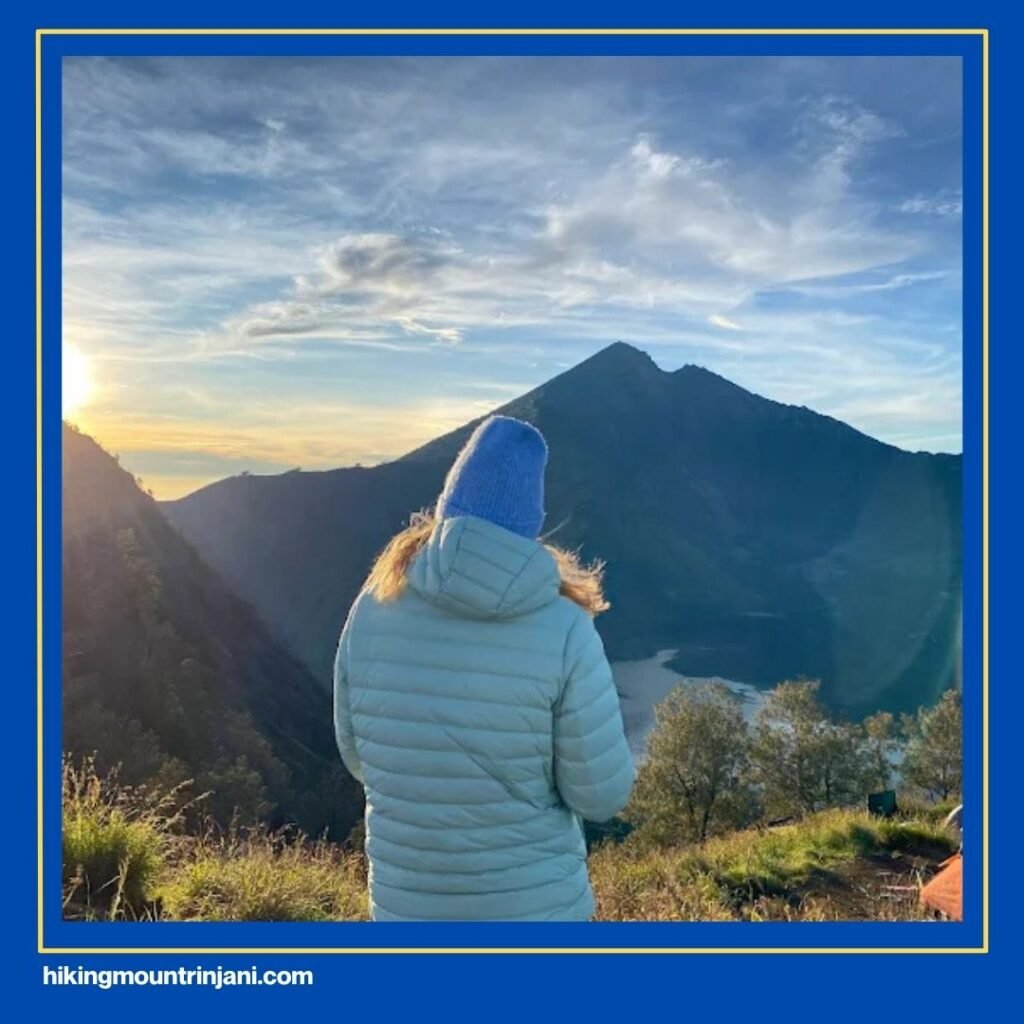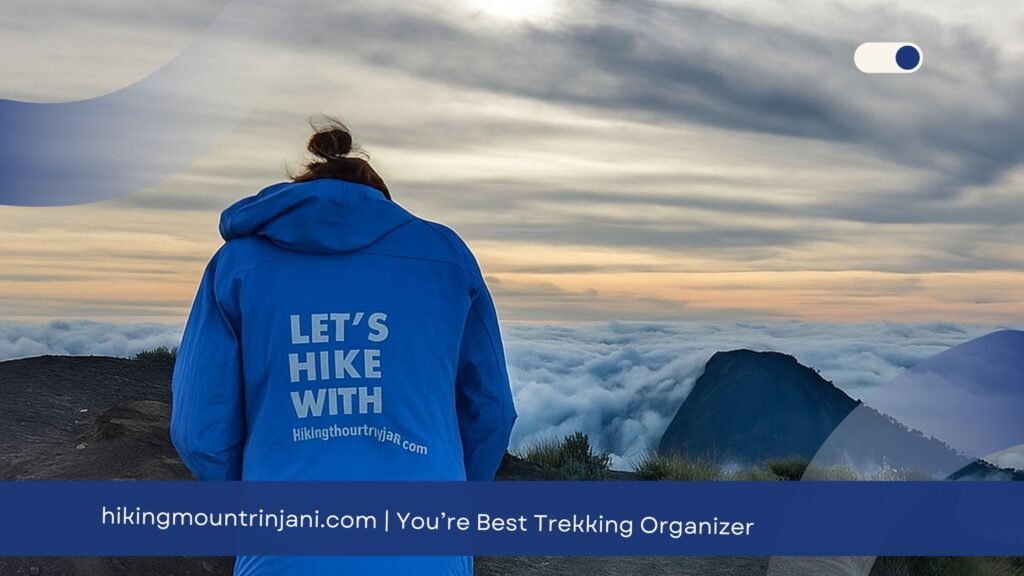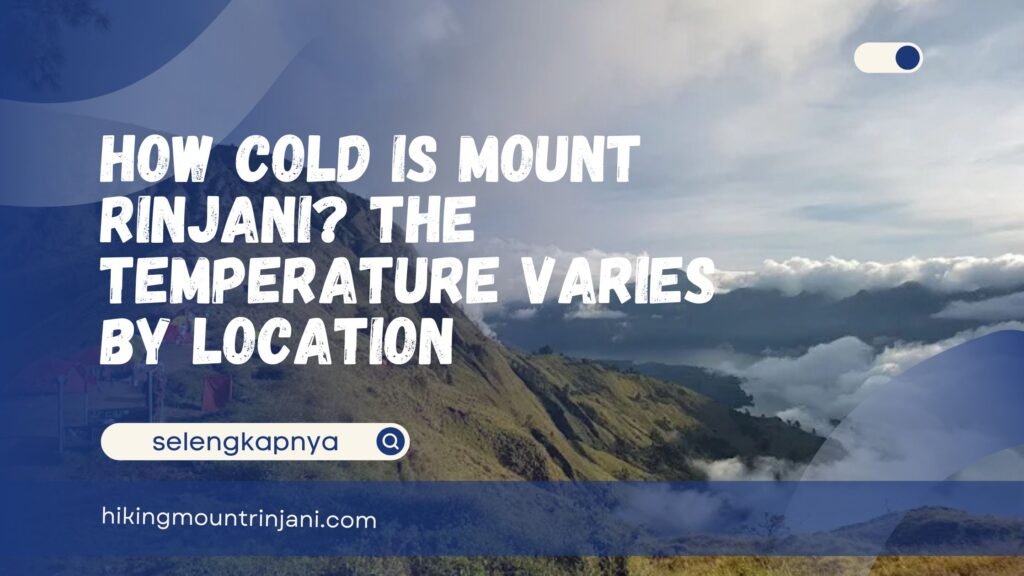How Cold Is Mount Rinjani – Mount Rinjani, rising 3,726 meters above sea level, is one of Indonesia’s most iconic volcanoes. Its stunning crater lake, dramatic caldera walls, and sweeping sunrise views have attracted hikers from around the world. Yet, beyond the breathtaking scenery, many visitors wonder about something practical: How cold is Mount Rinjani?
This is an important question, especially if you are planning a multi-day trek. Understanding the temperature helps you prepare the right clothing and gear. While some imagine a tropical mountain to be comfortably warm, Rinjani is surprisingly cold at higher elevations, especially at night and near the summit.
Temperatures shift dramatically depending on altitude, wind exposure, and time of day. If you underestimate these conditions, you may find yourself struggling to stay warm, or carrying too much unnecessary gear.
In this guide, you will learn how temperatures vary by location, from the summit to the crater rim and base areas. You will also find practical clothing advice to help you stay warm and comfortable throughout your trek so you can enjoy Rinjani without being overwhelmed by the cold.
How Cold Is Mount Rinjani? Varies by Location
Because Mount Rinjani spans multiple elevation zones, the temperature is not uniform throughout the trek. Weather can also shift quickly, so preparing for a range of conditions is essential.
Below are temperature summaries across key points on the mountain:
1. The Temperature at Mount Rinjani’s Summit

The summit, at 3,726 meters, is the coldest section of the entire trek. Temperatures here can drop significantly, especially just before sunrise when most summit hikers arrive.
On average, summit temperatures range from 4°C to 10°C (39°F–50°F). During windy conditions, wind chill can make it feel even colder, sometimes approaching near freezing. Although snowfall is extremely rare, frost-like conditions can occasionally occur when humidity and low temperatures meet.
Because most hikers reach the summit for sunrise, you will likely experience the coldest moment of your entire Rinjani journey here. Strong winds, thin air, and steep terrain combine to make thermal protection vital. Without proper clothing layers, the ascent can feel uncomfortable and draining.
Key points:
- Coldest point of the mountain
- Often windy
- Typically coldest just before sunrise
- Layering is essential
.
Read Also: Is Mount Rinjani Still Active & Likely to Erupt Again? Let’s Explore
2. How Cold Is the Crater Rim of Mount Rinjani?

The crater rim, where most campsites are located, sits between 2,600 and 2,700 meters. Temperatures here are milder than the summit but still significantly cold, especially at night.
Typical nighttime temperatures range from 8°C to 12°C (46°F–54°F), while early morning hours may feel close to 6–7°C (42–45°F), depending on wind. Daytime temperatures are more comfortable, averaging 15°C to 20°C (59°F–68°F) under clear skies.
Because crater rim campsites are relatively exposed, wind is still a factor. A good sleeping bag and additional layers are very helpful for keeping yourself warm until morning. When the weather is clear, the crater rim offers breathtaking views of Segara Anak Lake and the surrounding volcanic walls, a rewarding sight after a day of hiking.
Key points:
- Cold at night, especially with wind
- More comfortable during daytime
- Main camping area — warmth at night is important
How Cold Is Mount Rinjani Overall, Both Day and Night?
Throughout the lower trails, such as Senaru or Sembalun, daytime temperatures range between 18°C and 25°C (64°F–77°F). These sections can feel warm, especially when climbing steadily under the sun.
Nighttime temperatures drop significantly once you move above 2,000 meters. The difference between day and night can be surprising. While daytime trekking might make you sweat, the evening hours often require winter-style layers, particularly at the crater rim or summit.
Generally:
- Daytime (lower trails): Mild to warm
- Nighttime (crater rim/summit): Cold to very cold
Because of this wide temperature range, smart packing is crucial. You need to be prepared for warm hiking conditions during the day and chilly weather at night without carrying too much weight.
How to Dress Properly for Rinjani’s Temperatures

Knowing the temperature changes is only half the preparation. Choosing the right layers will help you stay warm, dry, and comfortable throughout the trek.
Here is a practical clothing guide:
- Base Layer. Wear a moisture-wicking base layer to keep sweat off your skin. It helps regulate body temperature and prevents chills once you stop moving. Avoid cotton, as it traps moisture.
- Mid-Layer Insulation. A fleece or light down jacket provides insulation during cooler moments. Especially at camp or during early mornings before summit push.
- Outer Shell. A windproof and waterproof shell protects you from sudden rain and wind. Because wind chill can be severe at higher altitudes, a proper outer layer is important.
- Trekking Pants. Lightweight pants are ideal during the day. For evenings or summit attempts, thermal leggings under your trekking pants help maintain warmth.
- Gloves and Beanies. These small items make a big difference — especially at the summit. A pair of warm gloves and a beanie protect your extremities from biting cold.
- Socks & Footwear. Warm, breathable socks help prevent cold feet. Trekking shoes with good grip are necessary for shifting volcanic gravel on the summit trail.
The last is sleep System. A warm sleeping bag (comfort rating around 0°C–5°C) is highly recommended to stay comfortable at the crater rim.
By using layers, you can adapt to conditions throughout the day. Staying light during warm hours and protected during cold nights or windy summit climbs.
.
Read Also: How Tall Is Mount Rinjani? Before and After Eruption Comparison
Ready for a Comfortable Rinjani Hike? Join Us

If you want to hike Mount Rinjani without worrying about logistics or accommodations, you can join Hiking Mount Rinjani, an official trekking organizer ready to support your journey.
The team will pick you up directly from your arrival point in Lombok and take you to your accommodation to rest before the trek begins the next day.
What is prepared for you?
- Hotel/house for resting
- Nutritious meals before and during the hike
- Complete logistics and equipment
- Standard safety and comfort gear
- Professional porters & experienced guides
Before you depart, your itinerary will be discussed via WhatsApp and can be revised upon arrival if needed. During your briefing in Lombok, the route details and trail conditions will also be explained so that you feel ready and well-informed before the ascent.
Whether you travel solo, as a small group, or in a larger team, your hike will remain well-organized. You can simply enjoy the experience while all logistics: transportation, permits, meals, and gear, are taken care of.
Want to climb Rinjani comfortably, smoothly, and without hassle? Get in touch with Hiking Mount Rinjani now via WhatsApp or visit their website:
Understanding the temperatures on Mount Rinjani helps you prepare better, both mentally and physically. With the right clothing system and proper planning, the cold becomes part of the adventure rather than a challenge. When the sunrise lights up the summit and the lake below, the effort feels worthwhile.
Enjoy the climb and stay warm!
.

